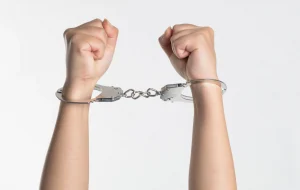Even as the nation reeled over the massacre of 19 children and two teachers at an elementary school in Uvalde, Texas, multiple mass shootings happened elsewhere over the Memorial Day weekend in areas both rural and urban. Still, though single-death incidents still accounted for most gun fatalities.
Gunfire erupted in the predawn hours of Sunday at a festival in the town of Taft, Oklahoma, sending hundreds of revelers scattering and customers inside the nearby Boots Café diving for cover. Eight people ages 9 to 56 were shot, and one of them died.
Also read: DoJ probe could shed light on police time lapse in Uvalde killings
Six children ages 13 to 15 were wounded Saturday night in a touristy quarter of Chattanooga, Tennessee. Two groups got into an altercation, and two people in one of them pulled guns and started shooting.
And at a club and liquor store in Benton Harbor in southwestern Michigan, a 19-year-old man was killed and six other people were wounded after gunfire rang out among a crowd around 2:30 a.m. Monday. Police found multiple shell casings of various calibers.
Those and others met a common definition of a mass shooting, in which four or more people are shot. Such occurrences have become so regular, news of them is likely to fade fast.
Also read: A father’s anguish outside Texas school while shooting unfolded
There were at least two incidents in Chicago between late Friday and Monday that qualified as mass shootings, including one near a closed elementary school on the West Side in which the wounded included a 16-year-old girl.
Single-fatality shootings also rocked families and communities: On the South Side, the body of a young man slain at an outdoor birthday party lay on the sidewalk early Sunday, covered by a white sheet. His mother stood nearby, crying.
Overall, Chicago recorded 32 gunfire incidents over the weekend in which 47 people were shot and nine died.
In the wake of the Uvalde shooting, by an 18-year-old who legally purchased an AR-style rifle, Texas Gov. Greg Abbott and other Republican opponents of tougher gun laws quickly pointed at Chicago as an example of how such measures don’t work, saying, “more people are shot every weekend (there) than there are in schools in Texas.”
Also read: How US schools reacted to the Uvalde shooting
High rates of gun violence in Chicago have made a series of Democratic governments there, including that of current Mayor Lori Lightfoot, vulnerable to criticism, sometimes from within their own party.
But the assertions by Abbott and others are misleading and oversimplify the situation in the country’s third-largest city. Many guns used in the killing of Chicagoans were initially bought in other states with less stringent gun laws, like Indiana and Mississippi. Chicago officials also note that the city records fewer murders per capita than many other smaller U.S. cities.
Police chiefs there and in other cities cancelled days off to boost the numbers of officers over the holiday, hoping it would act as a deterrent. Independent conflict mediators also hit the streets, using social media to identify simmering conflicts with the potential to explode into real-world violence.
In Detroit, Police Chief James White promised to strictly enforce a curfew aimed at youths and teens after three people were wounded during a shooting earlier this month in Greektown, a popular downtown restaurant and entertainment district.
Such strategies may have worked in individual cases, but statistics from several cities didn’t indicate violence was kept at or below levels from previous years. Chicago’s Memorial Day weekend death toll was three times last year’s.
Also read: Joe Biden visits Uvalde after elementary school shooting: Key takeaways
It’s long been a rule of thumb in northern cities that hot weather means more violence. Temperatures in Detroit and Chicago were in the 80s — unseasonably warm — during the three-day weekend, bringing more people outside and increasing the chances of clashes, often between rival gangs. Alcohol at holiday parties can fuel personal beefs, some of which first fester online.
“The seasons may not have much of an impact on shootings in Los Angeles, where the weather is always good,” said Rodney Phillips, a violence prevention worker and former gang member in Chicago. But in his city, Memorial Day weekend typically marks “the start of the killing season,” he said.
Residents like Yvonne Fields, of Detroit, say they are especially cautious when Memorial Day rolls around. She, her children and grandchildren spent time closer to home this weekend.
“The holidays are not like they used to be,” Fields said. “The gangs have taken over. They do drive-by shootings. Everyone is living in fear.”
Police in big cities often say most homicides have some tie-in to gangs, though others point to poverty and the desperation that comes with it as underlying causes.
An organizational shift over the past three decades, from top-down gangs led by identifiable leaders who could assert control to more fragmented, loosely structured groups, has also contributed to the violence.
“These gang factions are getting younger and younger, bolder and more impulsive,” Phillips said. “It’s alarming. It’s often children shooting children these days.
Malik Shabazz, who helps lead neighborhood safety and anti-crime patrols in Detroit, said the Detroit New Black Panther Nation/New Marcus Garvey Movement he founded looks for spikes in crime during the holidays when people gather in groups and have more free time away from work.
“What I see is both the perps and the victims of (shootings and violent crime) are becoming younger and younger, and the crime is becoming more heinous,” said Shabazz, 59. “And people bring their guns and people have beef, ‘now I can shoot you and I can stab you over an issue of respect, not talk it out or ignore it and walk it off.’”
Williams reported from Detroit.






